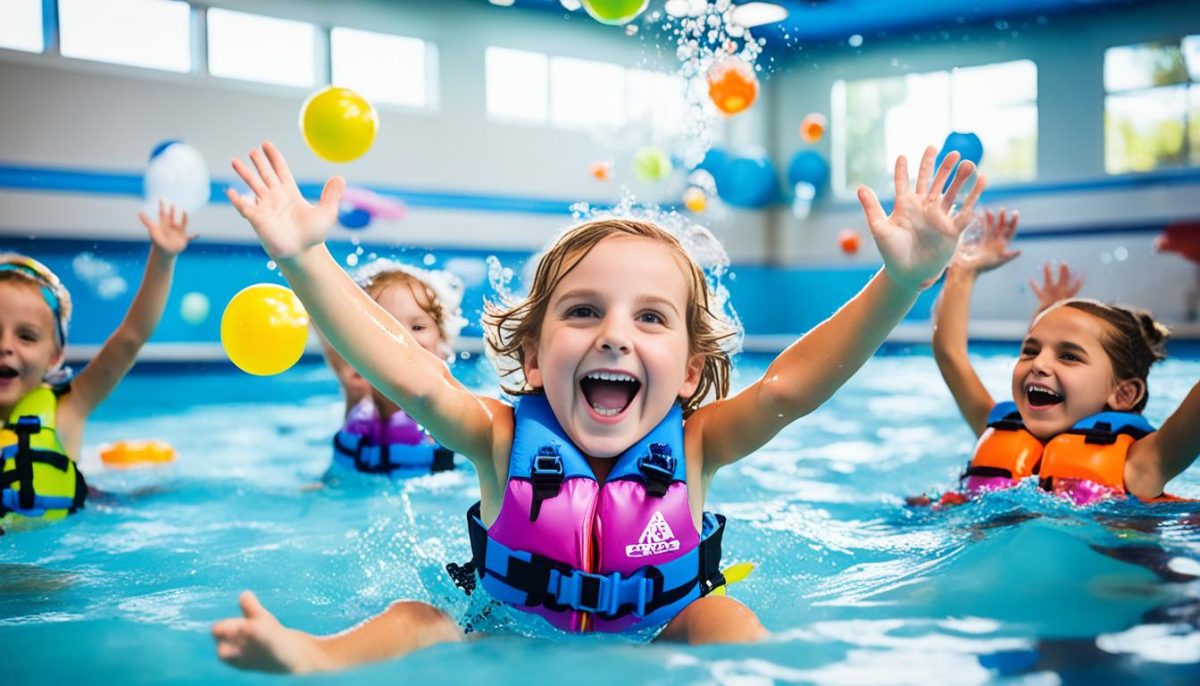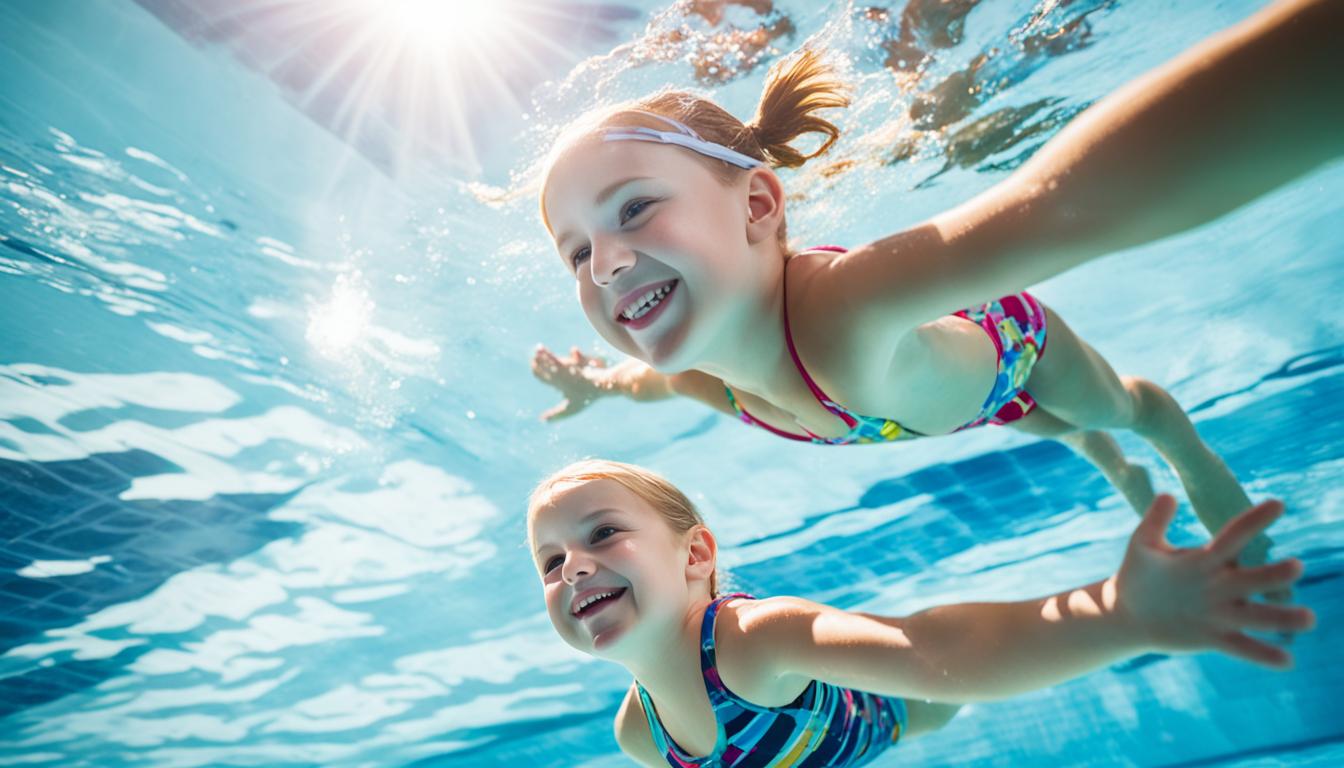Welcome to our guide on how to teach a 7 year old to swim! Teaching your child to swim is not only a valuable life skill but also a great way to promote their overall health and safety. In this article, we will provide a step-by-step approach to help you teach your 7 year old to swim with confidence and enjoyment. Whether your child is just getting started or looking to refine their skills, we’ve got you covered.
From building their water confidence to introducing them to basic stroke techniques, we’ll walk you through a comprehensive plan that ensures your child develops strong swimming abilities while having loads of fun along the way. So let’s dive right in and get started on this exciting journey!
In the first section, we will focus on water familiarization activities. It’s essential to make your child comfortable in the water before moving on to more advanced skills. We’ll explore various enjoyable games and activities that will build their confidence and help them feel at ease in the pool.
Next, we will move on to teaching your little swimmer basic swimming skills. We’ll break down the fundamentals, including floating, kicking, and arm movements. Our expert tips will make these lessons engaging and effective, ensuring your child can swim independently in no time.
Once your child has mastered the basics, we’ll guide you through advanced swimming techniques. From perfecting stroke techniques to learning bilateral breathing and diving, we’ll provide step-by-step instructions that will take their swimming abilities to the next level.
So, get ready to embark on this exciting swimming journey with your 7 year old! By the end of this guide, you’ll have all the tools and knowledge to teach your child how to swim confidently and safely. Let’s make a splash together!
Start with Water Familiarization
Before diving into formal swimming lessons, it’s important to start with water familiarization activities. This initial step will help your 7-year-old develop a comfort level with the water and build their confidence in the pool.
One of the best ways to introduce your child to the water is through fun and engaging games. These activities not only make learning enjoyable but also help your child develop important water skills. Here are a few ideas to get you started:
- Water play: Encourage your child to splash around and interact with the water in a playful manner. This can involve pouring water from one container to another or using water toys to create mini waterfalls.
- Puddle jumps: Set up small puddles or shallow areas in the pool and have your child jump in and out. This will help them become familiar with the sensation of being in the water.
- Blowing bubbles: Teach your child how to blow bubbles in the water. This not only helps them become comfortable with putting their face in the water but also introduces an important breathing technique for swimming.
Remember to always provide positive reinforcement and praise your child’s efforts during these water familiarization activities. This will help build their confidence and make them excited to continue learning.
“Water familiarization is a crucial first step in teaching young children how to swim. By introducing them to the water through fun and engaging activities, we can create a positive and enjoyable learning experience.”
By starting with water familiarization, you are laying a strong foundation for your child’s swimming journey. These activities will gradually build their comfort and confidence in the water, setting the stage for further skill development.

Next, we’ll explore the next phase of teaching a 7-year-old to swim – learning basic swimming skills. In this section, we’ll break down the essential techniques that will help your child become a proficient swimmer.
Learn Basic Swimming Skills
Now that your child is comfortable in the water, it’s time to teach them the basic swimming skills they need to become independent swimmers. These foundational techniques are essential for building their confidence and ensuring their safety in the water.
One of the first skills to focus on is floating. Teach your 7 year old how to relax and float on their back, keeping their body straight and their ears submerged. This skill is not only important for resting and regaining energy but also for developing water confidence.
Next, introduce kicking techniques. Teach your child how to kick their legs in a steady and controlled manner to move themselves through the water. Start with simple kicking exercises, gradually increasing the difficulty as they become more proficient. Proper kicking technique is crucial for propulsion and balance in the water.
Another important skill to master is arm movements. Show your child how to use their arms to pull themselves through the water, alternating their strokes. Start with basic arm movements, emphasizing the correct technique and coordination. As they become more comfortable, introduce different stroke styles such as freestyle and backstroke.
To make these swimming lessons enjoyable and effective for your child, incorporate fun activities and games into the learning process. For example, you can set up a mini obstacle course in the pool, challenging them to swim through hoops and retrieve objects. This makes the learning experience more interactive and engaging, keeping them motivated to improve their skills.
Remember, patience and encouragement are key when teaching your 7 year old these basic swimming skills. Each child learns at their own pace, so be supportive and celebrate their progress along the way. With regular practice and guidance, your child will soon be swimming confidently and independently.
| Basic Swimming Skills for 7 year olds | Benefits |
|---|---|
| Floating | Builds water confidence and allows for rest |
| Kicking | Aids propulsion and balance in the water |
| Arm Movements | Enables efficient movement and coordination |
Progress to Advanced Techniques
Once your 7 year old has mastered the basics of swimming, it’s time to take their skills to the next level with advanced swimming techniques. These techniques will not only enhance their swimming ability but also build their confidence and endurance in the water.
Bilateral breathing is an important skill to develop at this stage. Teach your child to breathe in a rhythmic pattern by turning their head to the side while swimming. Encourage them to inhale through their mouth and exhale through their nose to maintain a steady flow of oxygen.
In addition to bilateral breathing, introduce diving techniques that will help your child explore new depths in the water. Teach them to dive from the side of the pool with their arms extended and enter the water headfirst. It is crucial to emphasize the importance of diving in a safe and controlled manner.
Finally, focus on refining stroke techniques such as freestyle, backstroke, and breaststroke. Break down each stroke and guide your child through the correct arm movements, body position, and kick coordination. Regular practice and correction are vital to ensure they execute these techniques efficiently.

